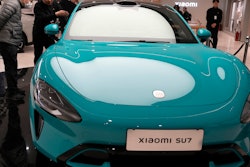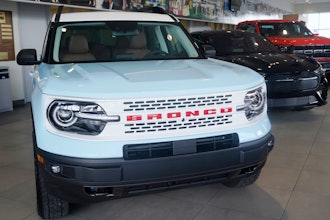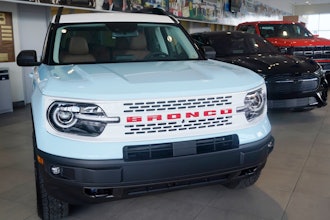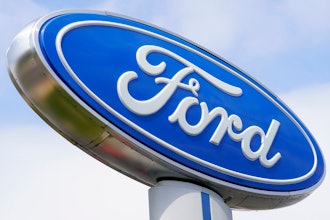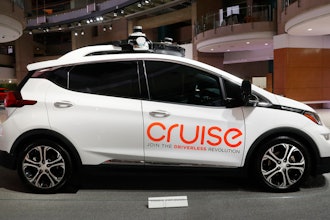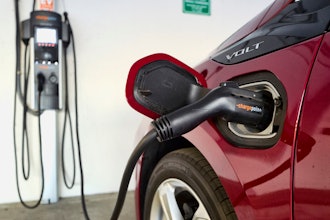If you're weary of Mini Coopers described as "cute," the new-for-2013 Mini Cooper Paceman is for you.
The quirky Paceman is basically a three-door, lighter-weight version of the tallish and longish Mini Cooper Countryman, but with larger rear fenders, blacked-out roof pillars and four, not five, seats.
With a few minor exterior styling changes from the Countryman such as light-emitting diode taillamps that are horizontally positioned and a slightly more rear sloped roof, the Paceman looks like a Mini Cooper Coupe on steroids.
Some 13.5 feet in overall length, the Paceman is 0.4 inches longer than the Countryman and a full 16 inches longer than the Mini Cooper hardtops that typically elicit the "cute" comments.
The Paceman hood is large and almost imposing for such a small car, and unlike many Minis, the Paceman is offered in both front- and all-wheel drive versions.
Mini officials debuted the Paceman as a crossover sport utility vehicle. But no one — Mini fan or not — considered the Paceman an SUV during the test drive. They mostly thought it was intriguingly different. You have to see it in person to understand, because pictures don't communicate the dimensions.
Pricewise, the Paceman slots just above the five-door Mini Cooper Countryman.
This is surprising because there is far less demand in America for vehicles with only two side doors like the Paceman has. Getting to the back seats is much more of a chore than it would be with rear doors included.
Starting manufacturer's suggested retail price, including destination charge, is $23,995 for a base Paceman with 121-horsepower, naturally aspirated four cylinder and six-speed manual transmission. With automatic transmission, the base 2013 Paceman starts at $25,245, and a Paceman with uplevel, turbocharged four cylinder delivering 181 horsepower starts at $27,695 with manual tranny and $28,945 with automatic.
Because the Paceman is difficult to categorize — Mini portrays it as a crossover SUV, while the federal government classifies it as a compact car and some people think it's more like a tall wagon — competitors are diverse.
The 2013 Nissan Juke crossover SUV, for example, seats five passengers well above the pavement in a five-door body that's virtually the same overall length as the Paceman. The Juke also comes with a standard turbocharged four cylinder developing 188 horsepower. But the Juke's starting MSRP, including destination charge, of $19,780 is lower than the Paceman's.
Meantime, the 2013 Volkswagen GTI hatchback is just about 4 inches longer in overall length than the Paceman. With 200-horsepower, turbocharged, four-cylinder engine, the GTI starts at $24,995 with manual transmission.
Prices for Mini's Paceman can easily go higher than the starting prices.
With leather and USB and iPod connections all options on the test Cooper S Paceman with all-wheel drive, the final window sticker price was nearly $40,000, which is luxury car territory.
Yet, the Paceman doesn't feel like a luxury car; its personality is that of a decidedly different — even eccentric — car with go-kart handling.
Drivers have to get accustomed to the placement of many controls and gauges. For example, as in other Minis, the large, round speedometer is located in the middle of the center dashboard. When the car is equipped with navigation system, the map display is put in the middle of the speedometer, where the driver as well as all three other passengers have good views of it.
There are round shapes everywhere inside the Paceman, from the two cupholders at the base of the center of the dashboard to the heater and air conditioning vents. The dial in front of the driver is a tachometer that is, of course, round, too.
Seats are comfortably firm and not expansive, widthwise, in this less than 5.9-foot-wide car.
And while the Paceman driver doesn't feel as if he or she is riding low to the pavement, the Paceman still suffers from blocked views of the traffic ahead when the vehicle is behind trucks, vans and real SUVs.
The 1.6-liter, twin-scroll turbo four cylinder gave a peppy response, and once past a bit of turbo lag, moved the 3,200-pound Paceman with spirit. The six-speed Steptronic automatic that was in the test car had paddle shifters that allowed for personalized gear shifts, though engine sounds could become loud.
Torque peaks at 177 foot-pounds starting at a low 1,700 rpm. Mini estimates a 0-to-60-miles-per-hour time of 7.3 seconds, which is better than that for a more mainstream vehicle.
But fuel mileage was nowhere near the combined city/highway rating of 26 miles per gallon that the federal government estimates. Instead, the test vehicle, which was driven 65 percent of the time in city conditions, averaged 23 mpg. With a 12.4-gallon gasoline tank, this means a meager range of 285 miles, which is far below that of other small cars.
The ride in the tester, with sport suspension and 19-inch tires, felt punishing at times. Even on mostly smooth road surfaces, the Paceman transmitted vibrations from imperfections it rolled over, and the short wheelbase created a choppy ride over expansion cracks on highways.
There was a good amount of road noise, too, that came into the cabin — so much so that the radio volume had to be adjusted regularly.
But the Paceman test car with all-wheel drive sure was fun to drive on the curvy mountain roads, where it responded immediately to steering inputs, clung to the pavement and where there was little feeling of massive weight shift from one side to the other.
Steering was precise in a comfortable way, and the small steering wheel added a race-car feel.






